
Emperor Go-En'yū was the 5th of the Emperors of Northern Court during the period of two courts in Japan. According to pre-Meiji scholars, his reign spanned the years from 1371 through 1382.

The Fujiwara clan was a powerful family of imperial regents in Japan, descending from the Nakatomi clan and, as legend held, through them their ancestral god Ame-no-Koyane. The Fujiwara prospered since the ancient times and dominated the imperial court until the Meiji Restoration in 1868. They held the title of Ason. The abbreviated form is Tōshi (藤氏).
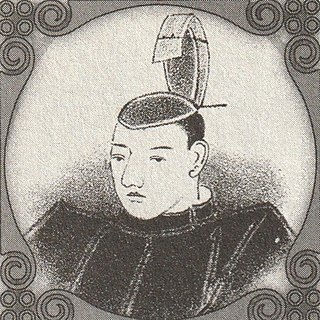
Emperor Horikawa was the 73rd emperor of Japan, according to the traditional order of succession.
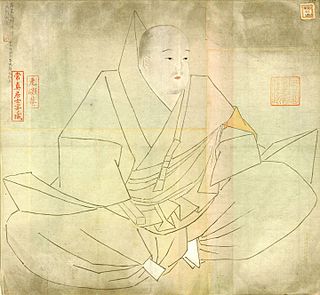
Emperor Shirakawa was the 72nd emperor of Japan, according to the traditional order of succession.

Fujiwara no Yorinaga was a Japanese statesman and a member of the Fujiwara clan who was highly significant in determining the course of 12th century Japanese political history.
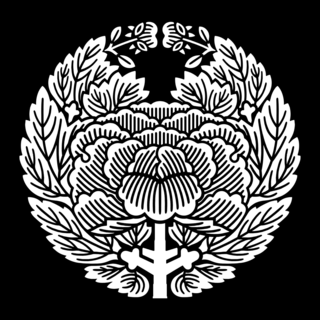
Takatsukasa family is a Japanese aristocratic kin group. The Takatsukasa was a branch of the Fujiwara clan and one of the Five regent houses, from which Sesshō and Kampaku could be chosen.

Fujiwara no Fuhito was a powerful member of the imperial court of Japan during the Asuka and Nara periods. Second son of Fujiwara no Kamatari, he had sons by two women, and those sons were the founders of the four principal lineages of the Fujiwara clan: the South, North, Ceremonial, and Capital lineages. Also, he had four daughters by two other women, three by Kamohime, one by Tachibana no Michiyo. One daughter by Kamohime became Emperor Monmu's wife Miyako, who in turn gave birth to Emperor Shōmu. The daughter by Michiyo became the empress of his grandson Shōmu, Empress Kōmyō.
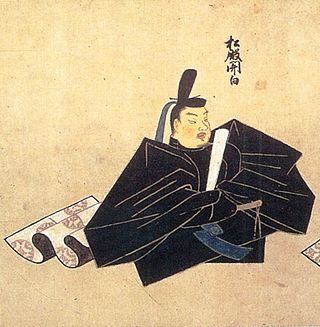
Fujiwara no Motofusa was an imperial regent in the late 12th century, serving both Emperor Rokujō and Emperor Takakura. He was also called Matsudono Motofusa, as he came from the village of Matsudono, near Kyoto. Fujiwara no Tadataka and Matsudono Moroie were his first and third sons, respectively.
Fujiwara no Morozane was a regent of Japan and a chief of the Fujiwara clan during the late Heian period. He was known as Kyōgoku dono or Go-Uji dono. He held the positions of sessho or kanpaku for a twenty-year period, sessho from 1075 to 1086 during the reign of Emperor Shirakawa and from 1094 to 1099 during the reign of Emperor Horikawa, and kampaku from 1086 to 1094 during the reign of Emperor Horikawa.
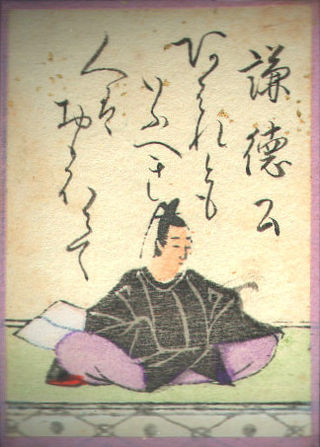
Fujiwara no Koretada/Koremasa, also known as Ichijō Sesshō, was a Japanese statesman, courtier, politician and waka-poet during the Heian period. His poems were published in "The Collected Poems of the First Ward Regent", Ichijo Sessho Gyoshu, and in Hyakunin Isshu. He was handsome and wise, and his personality was flashy.

Fujiwara no Kaneie was a Japanese statesman, courtier and politician during the Heian period. He also was known as Hōkō-in Daijin and Higashi-sanjō-dono.
Fujiwara no Kanemichi, also known as Horikawa-dono and Tōtōmi-kō, was a Japanese statesman, courtier and politician during the Heian period.
Fujiwara no Michikane, the son of Kaneie, was a Japanese nobleman and monk of the Heian period.
Fujiwara no Tadazane was a Japanese noble, the son of Fujiwara no Moromichi and the grandson of Fujiwara no Morozane. He was the father of Fujiwara no Tadamichi. He built a villa, Fukedono, north of the Byōdō-in Temple in 1114.

Ono no Michikaze or Ono no Tōfū was a prominent Shodōka during the Heian period (794–1185). One of the so-called Sanseki 三跡, along with Fujiwara no Sukemasa and Fujiwara no Yukinari, Michikaze is considered the founder of Japanese style calligraphy or wayōshodō (和様書道) and popularly extolled in Japan as the "reincarnation of Wang Xizhi".

The Hokke was cadet branch of the Fujiwara clan, the other three being the Nanke, Kyōke and Shikike. The Hokke were the de facto rulers of Japan through their hereditary position as imperial regents. In the Kamakura period, it split into the Five regent houses, who continued to monopolize the regency from the 12th century until 1868. After the Meiji Restoration, these houses were appointed Prince in the new hereditary peerage.

Fujiwara no Tsuginawa, also known as Fujiwara no Tsugutada and Monozomo no Udajin, was a Japanese statesman, courtier and politician during the Nara period.
Fujiwara no Kanshi, also known as Ono no Kōtaigō (小野皇太后) was an empress consort of Emperor Go-Reizei of Japan. Her given name can also be read Yoshiko.
Fujiwara no Nariko, also known as Bifukumon-in (美福門院), was an empress consort of Emperor Toba of Japan and mother of Emperor Konoe. She was the daughter of the chūnagon Fujiwara no Nagazane (藤原長実) and Minamoto no Masako (源方子).

Minamoto no Michichika was a Japanese noble and statesman of the late Heian period and early Kamakura period. Serving in the courts of seven different emperors, he brought the Murakami Genji to the peak of their success. He is also commonly known as Tsuchimikado Motochika, and in Sōtō Zen buddhism as Koga no Michichika.












